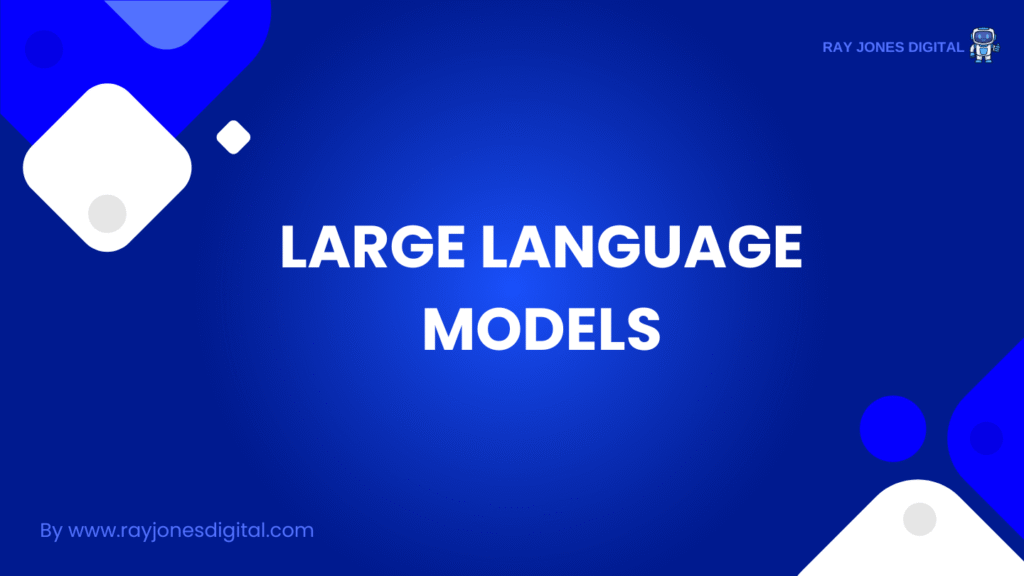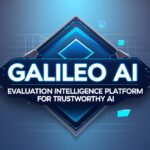
The artificial intelligence landscape has transformed dramatically over the past few years, with large language models emerging as the cornerstone of modern AI applications. These sophisticated systems power everything from customer service chatbots to advanced content creation tools, fundamentally changing how businesses operate and innovate.
Understanding which LLMs deliver the best performance for your specific needs has become crucial for staying competitive. This comprehensive guide examines the leading large language models available today, their unique capabilities, and practical applications across industries. Whether you’re a developer, business leader, or AI enthusiast, this analysis will help you navigate the complex world of LLMs and make informed decisions about implementation.
Understanding Large Language Models
Large language models are advanced AI systems trained on vast amounts of text data to understand and generate human-like language. These models use transformer architecture and deep learning techniques to process and respond to natural language inputs with remarkable accuracy and nuance.
The power of LLMs lies in their ability to understand context, maintain coherent conversations, and perform complex reasoning tasks. They can write code, analyse data, translate languages, create content, and solve problems across multiple domains. This versatility makes them invaluable tools for businesses seeking to automate processes and enhance productivity.
Modern LLMs have evolved far beyond simple text generation. They can understand multimodal inputs, integrate with external systems, and adapt to specific industry requirements. The most advanced models demonstrate reasoning capabilities that approach human-level performance in many tasks.
The rapid advancement in LLM technology has created a competitive landscape where new models regularly surpass previous benchmarks. Staying current with these developments is essential for organisations looking to leverage AI effectively.
Leading Large Language Models for 2026
GPT-4 and GPT-4 Turbo
OpenAI’s GPT-4 family continues to set industry standards for large language model performance. GPT-4 demonstrates exceptional capabilities in reasoning, creativity, and knowledge synthesis across diverse domains.
The model excels at complex problem-solving tasks, including mathematical reasoning, code generation, and creative writing. Its ability to maintain context over long conversations makes it particularly valuable for sophisticated applications requiring sustained interaction.
GPT-4 Turbo offers enhanced performance with improved efficiency and reduced costs. The model processes longer inputs and provides more accurate responses whilst maintaining the high-quality output that defines the GPT-4 series.
Integration with various applications through OpenAI’s API makes GPT-4 accessible for businesses of all sizes. The model’s consistent performance and reliability have made it the preferred choice for many enterprise applications.
Claude 3 Opus and Claude 3 Sonnet
Anthropic’s Claude 3 series represents a significant advancement in AI safety and capability. Claude 3 Opus delivers state-of-the-art performance on complex reasoning tasks whilst maintaining strong safety guardrails.
The model demonstrates exceptional performance in analysis, research, and strategic thinking. Its ability to provide nuanced responses to complex queries makes it particularly valuable for professional applications requiring careful consideration of multiple factors.
Claude 3 Sonnet offers a balanced approach between performance and efficiency. The model provides strong capabilities across various tasks whilst maintaining faster response times and lower computational costs.
Anthropic’s focus on AI safety means Claude models are designed with robust safeguards against harmful outputs. This emphasis on responsible AI makes Claude particularly suitable for applications where safety and reliability are paramount.
Gemini Ultra and Gemini Pro
Google’s Gemini series brings the search giant’s extensive knowledge base and multimodal capabilities to the LLM landscape. Gemini Ultra delivers exceptional performance across text, code, and reasoning tasks.
The model’s integration with Google’s ecosystem provides unique advantages for users already invested in Google’s productivity tools. Seamless connections to Google Search, Gmail, and other services enhance the model’s practical utility.
Gemini Pro offers strong performance at a more accessible price point. The model handles most common business applications effectively whilst providing excellent value for organisations with moderate AI requirements.
The multimodal capabilities of Gemini models enable them to process and generate content across different media types. This versatility makes them particularly valuable for content creation and analysis tasks.
Llama 3 and Llama 3 Instruct
Meta’s Llama 3 series provides powerful open-source alternatives to proprietary models. Llama 3 delivers competitive performance across various benchmarks whilst offering the flexibility of open-source deployment.
The model’s open-source nature allows organisations to modify and customise it for specific applications. This flexibility enables unique implementations that wouldn’t be possible with closed-source alternatives.
Llama 3 Instruct is specifically fine-tuned for instruction-following tasks. The model excels at understanding and executing complex instructions, making it particularly valuable for automated workflow applications.
The ability to run Llama models locally provides privacy advantages and eliminates ongoing API costs. This makes them attractive options for organisations with specific data security requirements or high-volume usage patterns.
Mixtral 8x7B and Mixtral 8x22B
Mistral AI’s Mixtral series uses innovative mixture-of-experts architecture to deliver impressive performance with efficient resource utilisation. Mixtral 8x7B provides capabilities comparable to much larger models whilst maintaining faster inference speeds.
The model’s efficiency makes it particularly suitable for applications requiring real-time responses or high-throughput processing. Its compact size enables deployment in resource-constrained environments whilst maintaining strong performance.
Mixtral 8x22B offers enhanced capabilities for more demanding applications. The model handles complex reasoning tasks effectively whilst maintaining the efficiency advantages of the mixture-of-experts architecture.
The open-source availability of Mixtral models provides organisations with flexibility in deployment and customisation. This makes them attractive options for businesses requiring specific modifications or local deployment.
Choosing the Right Large Language Model
Selecting the optimal LLM depends on multiple factors including performance requirements, budget constraints, and specific use cases. Understanding these considerations helps ensure you choose the model that best serves your needs.
Performance requirements vary significantly between applications. Simple chatbots might not need the same capabilities as advanced research tools or code generation systems. Evaluate each model’s performance on tasks similar to your intended use cases.
Budget considerations play a crucial role in model selection. API-based models offer lower upfront costs but can become expensive with high usage. Open-source models require infrastructure investment but eliminate ongoing API fees.
Integration requirements affect implementation complexity and costs. Models with robust APIs and extensive documentation typically offer smoother integration experiences. Consider how each model connects with your existing systems and workflows.
Data privacy and security needs may restrict your options. Some applications require local deployment or specific data handling protocols. Open-source models often provide more control over data processing and storage.
Customisation needs determine whether you require fine-tuning capabilities or can work with pre-trained models. Some applications benefit from domain-specific training that may not be available with all models.
Practical Applications Across Industries
Customer Service and Support
LLMs are revolutionising customer service by enabling sophisticated chatbots that can handle complex queries and provide personalised responses. These systems can understand context, maintain conversation history, and escalate issues appropriately.
Modern customer service LLMs can access knowledge bases, process customer information, and generate responses that match brand voice and tone. This capability enables 24/7 support availability whilst reducing operational costs.
The ability to handle multiple languages and cultural contexts makes LLMs particularly valuable for global businesses. They can provide consistent service quality across different markets and time zones.
Content Creation and Marketing
Marketing teams leverage LLMs for content creation, campaign development, and audience analysis. These models can generate blog posts, social media content, and advertising copy that aligns with brand guidelines and target audience preferences.
LLMs excel at creating personalised content at scale. They can generate variations of marketing messages for different segments, enabling more targeted and effective campaigns.
The ability to analyse and optimise content performance helps marketers refine their strategies continuously. LLMs can suggest improvements based on engagement data and industry best practices.
Software Development
Developers use LLMs for code generation, debugging, and documentation. These models can write code in multiple programming languages, explain complex algorithms, and suggest optimisations.
LLMs accelerate development cycles by automating routine coding tasks and providing intelligent code suggestions. They can help developers explore new technologies and implement best practices more effectively.
The ability to generate documentation and explain code functionality improves team collaboration and knowledge sharing. LLMs can create comprehensive documentation that helps onboard new team members and maintain code quality.
Research and Analysis
Research professionals leverage LLMs for literature reviews, data analysis, and hypothesis generation. These models can process large volumes of information quickly and identify patterns that might not be immediately apparent.
LLMs can synthesise information from multiple sources, providing comprehensive overviews of complex topics. This capability is particularly valuable for interdisciplinary research and strategic planning.
The ability to generate research questions and suggest methodologies helps researchers explore new directions and approaches. LLMs can serve as collaborative partners in the research process.
Legal and Compliance
Legal professionals use LLMs for document review, contract analysis, and legal research. These models can identify relevant precedents, summarise case law, and flag potential compliance issues.
LLMs can process legal documents quickly and accurately, reducing the time required for routine legal tasks. This efficiency enables lawyers to focus on higher-value strategic work.
The ability to maintain consistency in legal document preparation helps ensure compliance and reduces errors. LLMs can apply legal templates and guidelines consistently across large volumes of documents.
Optimising Your LLM Implementation
Prompt Engineering
Effective prompt engineering is crucial for maximising LLM performance. Well-crafted prompts can significantly improve output quality and relevance whilst reducing the need for multiple iterations.
Start with clear, specific instructions that provide context and desired outcomes. Include examples when possible to help the model understand your expectations. Experiment with different prompt structures to find what works best for your use cases.
Consider using prompt templates for common tasks to ensure consistency across team members. Document successful prompts and techniques for future reference and team training.
Model Fine-tuning
Fine-tuning allows you to adapt pre-trained models to specific domains or tasks. This process can significantly improve performance for specialised applications whilst maintaining the model’s general capabilities.
Evaluate whether fine-tuning is necessary for your use cases. Simple applications might work well with pre-trained models, whilst complex or domain-specific tasks may benefit from customisation.
Consider the costs and complexity of fine-tuning versus the potential benefits. Some applications may achieve better results through improved prompt engineering rather than model modification.
Integration Strategies
Successful LLM implementation requires careful integration with existing systems and workflows. Plan for data flows, user interfaces, and feedback mechanisms that support your business processes.
Consider how LLMs will interact with other AI tools and systems in your technology stack. Seamless integration reduces complexity and improves user experience.
Implement monitoring and quality assurance processes to ensure consistent performance. Track metrics that matter to your business and adjust implementations based on real-world usage patterns.

I am Ray Jones Digital
My current occupations: a Digital Marketer, Local SEO expert, Link Builder, and WordPress SEO specialist. Shopify SEO, Ecommerce Store Management, and HTML & WordPress Developer I have been practicing the above mentioned services for more than 10 years now As an SEO expert working with your ongoing projects.

![[Ai Prompt Engineer] - Unlocking AI Magic Ai Prompt Engineer](https://rayjonesdigital.com/wp-content/uploads/2024/06/Ai-Prompt-Engineer-150x150.jpeg)

